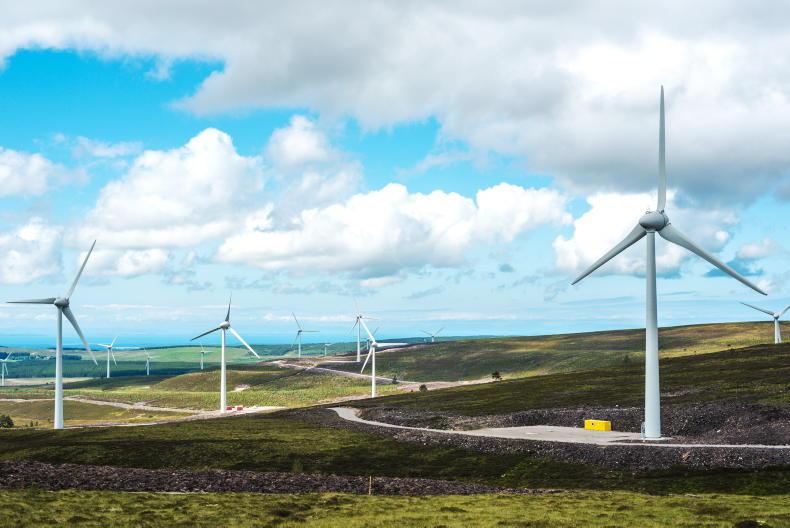Not only is Ireland off track to meet its renewable energy and emissions reduction targets, the country is actually going backwards. This was confirmed last week by the EPA, though it came as no surprise to most within the industry.
In its latest report, the EPA state that Ireland is now projected to achieve a reduction of up to 23% in total greenhouse gas emissions by 2030, assuming full implementation of all planned policies and measures across every sector. This marks a decline from the 29% reduction forecasted just last year.
Delays
Every solar panel installed, every turbine erected and every cubic metre of methane captured contributes to Ireland’s legally binding target of a 51% reduction in greenhouse gas emissions by 2030, compared to 2018.
However, delays in the planning system, limited grid capacity, connection hold-ups and sluggish policy development are now beginning to bite. Local politics, industry resistance, inadequate community consultation and land use strategies no longer fit for purpose are compounding the problem.
Set up to fail
With 2030 approaching, it’s fair to question whether the targets were underpinned by realistic assessments and sound judgement. Take just one capital project, the new Limerick to Cork motorway. By the time it opens, it will have taken well over three decades of planning, consultation, approvals and construction. So how can anyone expect an entire national energy system, which was developed over more than a century, to be overhauled in a tenth of that time?
The argument that exceptionally ‘ambitious targets’ were necessary to drive change, even if they were never realistically achievable, is disingenuous at best. That mindset means the country was set up to fail from the beginning. If we are genuinely facing billions of euros in fines by 2030 for missing these targets, then those who set them without a realistic path to delivery must be held accountable. We are not a country built for fast infrastructure rollout, and the decision makers at the time should have known that.
The numbers
This section focuses on the energy-related projections contained in the EPA’s report. The report models several scenarios, including a ‘with additional measures’ scenario, which forms the basis for most of the higher projections.
Electricity
With additional measures, the renewable electricity share is projected to reach 68.3% by 2030. This figure assumes the full delivery of planned policy supports and incorporates the most recent data on onshore wind, offshore wind and solar PV developments.
In the best case scenario, capacity is projected to reach 7.1 gigawatts of onshore wind, 2.7 gigawatts of offshore wind and 6.3 gigawatts of solar PV by 2030. These projections fall short of the Climate Action Plan (CAP) targets, which call for nine gigawatts of onshore wind, at least five gigawatts of offshore wind and eight gigawatts of solar PV by the same year. Gas-fired electricity generation also appears to be under-delivering. Updated EirGrid data was used for the report, which now expects 1.4 gigawatts of new gas-fired capacity by 2030, well below the CAP target of at least two gigawatts of new flexible generation. Given all the challenges outlined earlier, if a 68% renewable electricity share is achieved, it would represent a significant milestone in itself.
Electric vehicles
The full ambition of CAP, 945,000 electric vehicles on the road by 2030, is now expected to fall short. Even with all additional measures accounted for, the EPA projects that just 640,750 electric vehicles will be on Irish roads by 2030.
Zero-emission gas
The deployment of zero-emission gas-fired generation from biomethane or green hydrogen, particularly from offshore wind projects, is not currently included in the modelling. This is despite 2024 CAP referencing two gigawatts of offshore wind contributing to green hydrogen production.
Similarly, the CAP biomethane target of 5.7 terawatt-hours has been scaled back. Instead, the EPA states that 4.3 terawatt-hours of the renewable gas will be produced by 2030. This estimate is based on the latest available data on projects in the pipeline. However, while there are many projects in early development, it remains questionable if they will be built. For example, of the 18 projects supported under the 2024 Biomethane Capital Grant Scheme, it is expected that only one-to-three will be completed before the deadline. The remainder of the funding may be returned to the EU.
Heat pumps
The CAP 2024 target for residential heat pumps, including both new builds and retrofits, is 680,000 units by 2030. However, under the ‘with additional measures’ scenario, the EPA projects only 571,000 installations, falling short of the target.
This projection is based on updated figures for retrofit activity across the private and public housing sectors, as well as estimates for new home completions by 2030.
Right direction – SEAI
However, the SEAI’s preliminary energy balance for 2024 shows that Ireland is making marginal but measurable progress in reducing energy-related emissions, despite the challenges.
Primary energy demand is projected to fall by 1.3% compared to 2023, while energy-related CO2 emissions are expected to drop by 2.6%.
Renewable energy’s share of electricity generation is projected to rise to 43%, up from 40% last year, driven mainly by increases in wind and solar capacity.
The number of electric vehicles on Irish roads has also grown, with over 120,000 EVs expected by year-end —an increase of around 35% compared to 2023.
While these figures remain far below what is needed to meet the 2030 targets, they suggest that some long-planned measures are finally taking effect, and the system is inching in the right direction.






 This is a subscriber-only article
This is a subscriber-only article










SHARING OPTIONS: